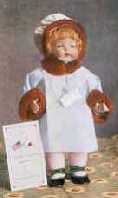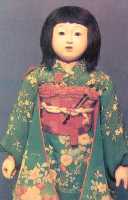Main Page Children's Page 1927 Exchange American Dolls Japanese Dolls Fun Links


|
Friendship
Dolls In the early 1900s, people from Japan who came to live in the U.S. suffered much discrimination. Dr. Sidney Gulick, who had lived in Japan for many years, believed that lack of understanding between Japanese and Americans was the primary cause of the ill feelings between the two countries. He wanted to do something to allow people of the two nations to better understand each other's culture and society. His idea was to begin with young children, who would be less likely as adults to show discrimination against foreigners if they became friends at an early age. In 1926, Dr. Gulick formed the Committee on World Friendship Among Children and initiated a mission of friendship for American children to send dolls to the children in Japan. Many Americans participated in the project, and 12,739 dolls were collected to send to Japan. The American dolls received a huge welcome when they arrived in Japan to participate in the celebration of Hina Matsuri (Doll Festival) on March 3, 1927. The dolls were then distributed to elementary schools and kindergartens throughout Japan. The Japanese children were delighted to see the cute dolls from America. Each school receiving a doll also got a letter from Dr. Gulick that expressed the hope that the children would have great fun with the American dolls and that Japan and America would always be loyal friends. Soon after receiving the American Friendship Dolls, Japan started preparations to send Japanese dolls to American children in order to express the country's thanks for the fabulous gift of over 12,000 dolls. Donations were collected from about 2.6 million children, and 58 beautiful dolls dressed in luxurious kimonos were made by the best doll makers in Japan. After the Japanese Friendship Dolls reached America in November 1927, they went on tours throughout the country so children and adults could see them. These charming messengers of friendship and goodwill were later sent to children's museums, public libraries, and other institutions so they could be permanently displayed. |
Photo at top left courtesy of
Yokohama Doll Museum
Photo at top right courtesy of Denver Museum of Miniatures, Dolls and Toys